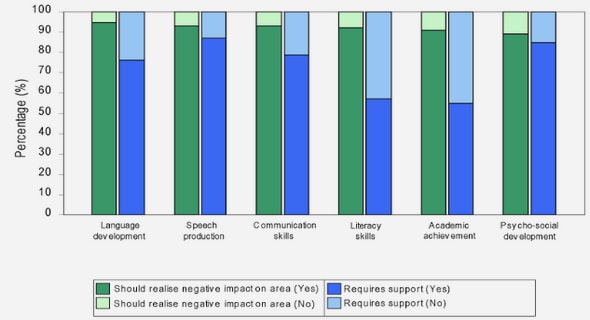(Downloads - 0)
For more info about our services contact : help@bestpfe.com
Table of contents
Part I
I.1. Drug Discovery and Development
I.2. Limitations of Drug Discovery and Development
I.3. Isotopically labelled compounds in DDD
I.4. Hydrogen isotopes in DDD and life sciences
I.4.1. Applications of deuterium in DDD
I.4.1.a) Deuterium labelled internal MS standards
I.4.1.b) Kinetic Isotope Effect and deuterated drugs
I.4.1.c) Deuterium PET tracers
I.4.2. Applications of tritium in DDD
I.4.2.a) Tritium in Quantitative Whole Body Audioradiography
I.4.2.b) Tritium in scintillation proximity assay
I.4.2.c) Tritium in plasma protein binding
I.5. Hydrogen isotopes labelling methods
I.5.1. Hydrogen isotope exchange acid-mediated labelling
I.5.2. Hydrogen isotope exchange base-mediated labelling
I.5.3. Hydrogen isotope exchange with heterogeneous metal catalysis
I.5.3.a) Transition metal-catalyzed HIE reactions
I.5.3.b) HIE reactions with catalyst mixtures
I.5.3.c) HIE reactions with nanoparticles
I.5.4. Hydrogen isotope exchange with homogeneous metal catalysis
I.6. Directed iridium-catalyzed HIE reactions
I.7. CH functionalization
I.8. Objectives of the thesis
Part II – Chapter 1
II.1. 1. Sulphonamides, N-oxides and phosphonamides – unexplored directing groups in HIE reactions
II.1. 2. Explanation of the HIE reaction process at Sanofi laboratories
II.1. 3. Optimization of the HIE conditions on the model sulphonamide compound
II.1. 4. Application of the optimized conditions on aryl-sulphonamides, N-oxides and arylphosphonamides
Part II – Chapter 2
II.2. 1. Introduction
II.2. 1.1. The phenylacetic acid derivatives moiety in life sciences
II.2. 1.2. Literature background of HIE reactions on phenylacetic acid derivatives
II.2. 1.3. What makes phenylacetic acid derivatives such a challenge
II.2. 2. Optimization of the model compound
II.2. 2.1. Catalyst screening
II.2. 2.2. Time screening
II.2. 2.3. Solvent and temperature screening
II.2. 2.4. Catalyst loading screening
II.2. 3. Scope and limitation of catalyst F in HIE of phenylacetic acid derivatives
II.2. 3.1. HIE reactions with catalyst F on phenylacetic ester derivatives
II.2. 3.2. HIE reactions with catalyst F on phenylacetic amide derivatives
II.2. 3.3. Application on phenylacetic acid derivatives drug molecules
II.2. 3.3.a) HIE reactions on drugs with excess of deuterium gas
II.2. 3.3.b) Transfer of the procedure to the deuterium manifold
II.2. 3.3.c) Transfer of the procedure to the tritium manifold
II.2. 4. Insights in the mechanism
II.2. 5. Conclusion
Part III – Chapter 1
III.1. 1. Introduction
III.1. 2. Comparison study of the catalysts A-G in the HIE of 8
III.1.2.1. Comparison study at low temperatures
III.1.2.2. Comparison study at high temperatures
III.1. 3. Application on complex drug-like compounds
III.1. 4. Conclusions
Part III – Chapter 2
III.2. 1. Introduction
III.2. 2. Competition HIE reactions study
III.2. 3. DFT calculations and energy profiles for insights into the competition study
III.2. 4. Prediction and experimental prove in HIE of disubstituted molecules
III.2. 5. Prediction and experimental prove in HIE of complex molecules and drugs
III.2. 6. Conclusion
Part IV
IV.1. Isotopic labeling of the drug payload of antibody-drug conjugates used for cancer treatment
IV.1.1. Application of ADC for treatment in oncology
IV.1.2. The Maytansine derivatives as ADCs
IV.1.3. Former approach for the synthesis of 3H-DM4
IV.2. Iridium-catalyzed hydrogen isotope exchange on L-DM4
IV.3. Methodology development of Hydrogen isotope Exchange on sp3-carbon centers
IV.3.1. Methodology development on the sulfur side chain
IV.3.1.a) Conditions screening of [H]-10 in HIE reaction
IV.3.1.b) Application of the developed methodology on DM4 side chain precursors
IV.3.2. Investigation of the small amino acids reactivity in HIE
IV.3.2.a) Influence of the N-terminal protecting group
IV.3.2.b) Analysis of the stereocontrol in HIE reaction of alanine
IV.3.2.c) Application of the HIE method on sterically more demanding amino acids
IV.3.3. Application of the optimized method in larger peptides
IV.3.4. Insights in the mechanism
IV.4. Conclusion
Part V
V.1. Heterogeneous iridium catalysis with nanoparticles
V.1.1. Nanoparticles: From homogeneous to heterogeneous catalysis
V.1.2. Development and synthesis of new iridium nanoparticles
V.1.3. Identification of the new directing group of interest
V.2. Literature background – HIE reactions of anilines in the past
V.3. Evaluation of the iridium nanoparticles
V.4. Application of IrNPts in HIE of small aniline molecules
V.5. The role of D2O in IrNPts catalyzed HIE reactions
V.6. Applications of IrNPts in HIE reactions of complex molecules and drugs
V.7. Conclusion
Part VI
Conclusion and future perspectives



